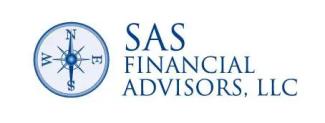
End of years tasks: Got too much stuff? Have preferred stock?
What is all this stuff? ¯\_(ツ)_/¯
Many of us have too much stuff. Often, we buy bigger spaces or storage lockers to accommodate more stuff rather than, or in addition to, making the hard choice to dispose of some of this stuff. Here is an article to help you make progress on getting rid of excess stuff, a good end-of-year purge so to speak. Look forward to some very interesting frameworks that may give you permission to think a little differently about the decision to reduce.
Link: https://ideas.ted.com/got-too-much-stuff-try-these-7-tips-to-help-pare-down/
Tax Strategy on Paying Taxes Now to Avoid them in Retirement
Last week we discussed charitable giving and some tax strategies that are limited to a 12/31/2021 deadline. A typical consideration is converting tax-deferred accounts to Roth IRAs. If you anticipate your income to be in the lowest 2 or 3 marginal tax rates (https://www.nerdwallet.com/article/taxes/federal-income-tax-brackets) AND you have money in savings that could be used to pay the taxes on converting pretax assets to Roth assets, contact us about the mechanics of Roth conversion. Yes. You would have to pay taxes on that conversion now (due tax day April 2022), but the idea is to do said conversions in lower-income (lower tax bracket years) so that in retirement you can enjoy more options for tax-free distributions from your Roth retirement account/s. Conversions need to be completed before the end of the calendar year.
Reflecting on the Blur that was 2021
There are other concerns as we wind up a very difficult, challenging year of Covid-19 from start to finish. The suspended animation of the last 3 quarters of 2020 has transitioned to “enough is enough.” Travel is increasing so we are all being exposed to different environments where the pandemic is treated differently. Mask and vaccination mandates are different as well as individuals’ compliance with mask-wearing and social distancing. Vaccinations have been a game-changer and allow incremental progress towards increased activity. Now with Omicron identified, the degree of uncertainty has increased. What is not uncertain is that the world population is increasingly feeling “enough is enough.” I too want badly to be done with this chapter.
Current Events and the Market
Equity markets are reacting to the Omicron variant this week. Already at historically high valuations, markets are vulnerable to pullbacks. So far this week markets have declined around 2.5%. Declines have been across the board with a combination of Omicron, anticipation that the Fed will begin tightening, and continued inflation giving markets a good excuse for a selloff. Interestingly, the US Treasury yield curve is flattening a bit with long-term rates falling as short-term rates increase.
SAS Fixed Income Tool in our Toolbox
With interest rates continuing to stay historically low in the fixed income asset class (fixed income, ie: bonds) we have been adding higher-yielding hybrid securities called preferred stock to our fixed income allocation. Although considered equity, preferred stock pays a fixed (sometimes variable) income quarterly, and the stock price moves dependent more on interest rates rather than stock prices. Preferred stock offers higher interest yields than bonds and often offers "qualified dividends." Qualified dividends are preferential since this type of dividend is taxed at capital gains tax rates instead of ordinary income tax rates. These projected higher dividends are intended to offset current low yields of bonds.
On the first of the month, we can look at manufacturing in the US. Profit margins and manufacturing are experiencing continued strong demand indicating a positive sign for the underlying economy. Again, Omicron is throwing a wrench into the expected positive trend for the economy. We’re staying vigilant and keeping you in the know.
Additional Resources: Retirement Plan and IRA Required Minimum Distributions FAQs
For 2021, Required Minimum Distributions, or RMDs, will be required from all eligible accounts before 12/31/2021. Last year, 2020, the CARES Act provided a one-year suspension on Required Minimum Distributions. That suspension ended on 12/31/2020.
To determine if you may be required to make a Required Minimum Distribution in 2021, consider the following two questions:
- Yes/No: Are you age 72? OR were you age 70.5 years old as of 1/1/2020? OR Regardless of age, do you own an inherited or beneficiary retirement account of any kind?
- Yes/No: Do you own any of the following employer-sponsored retirement plans? Profit-sharing plans, 401(k) plans (including Roth 401(k) plans), 403(b) plans, and 457(b) plans. Do you own any traditional IRAs and IRA-based plans such as SEPs, SARSEPs, and SIMPLE IRAs? (Note: RMD Rules do not apply to Roth IRAs while the owner is alive).
If you answered "Yes" to both of the above questions, you may be required to make a distribution from each eligible account before 12/31/2021.
For SAS managed accounts eligible for a 2021 RMD, please contact the SAS Advisor Team with the following information before 10/31/2021:
- If you would like your RMD to be completed with the same instructions as 2019
- The percentage to be withheld for federal *and* state taxes, or mark none
- The account to receive the RMD funds into either another owned Individual, Joint, or Trust account managed by SAS, or an external linked account not managed by SAS
- If banking instructions are not on file, please complete, sign and send back the following form to the SAS Advisor Team along with your responses: https://veoone.tdainstitutional.com/teamsite_vdh/resources/documents/downloadforms/TDAI9341.pdf
For non-SAS managed accounts eligible for a 2021 RMD, contact that account's advisor, custodian, or plan administration to complete the 2021 RMD before 12/31/2021.
IRS RMD Reference Link per the date of this blog 10/15/2021: https://www.irs.gov/retirement-plans/retirement-plans-faqs-regarding-required-minimum-distributions
This website is informational only and does not constitute investment advice or a solicitation. Investments and investment strategies recommended in this blog may not be suitable for all investors. SAS Financial Advisors, LLC and its members may hold positions in the securities mentioned within this newsletter.
The SAS Newsletters are posted on the SAS Blog weekly: https://www.sasadvisors.com/blog

